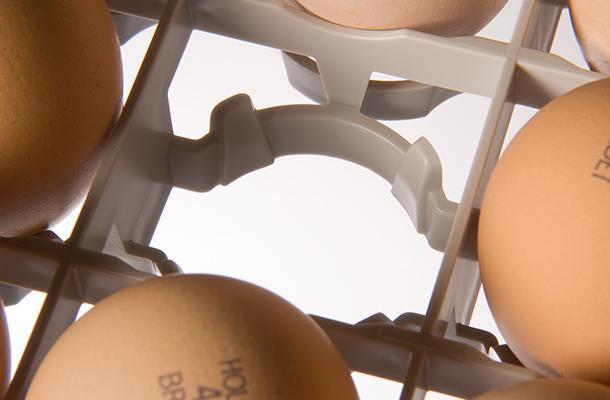On-farm traying: a smart idea?
Tags: Egg handling | Whitepaper
, January 1 2012

On breeder farms eggs are traditionally collected in paper or plastic trays that each hold 30 eggs. Typically, these are stacked six-high and transported to the hatchery in boxes, crates, trolleys or on pallets. Before incubation, hatchery staff have to transfer the trayed eggs to setter trays, either manually or (semi)-automatically. So far, each hatching egg has already been handled at least twice before incubation begins - and each time with the risk of causing hairline cracks and contamination that will ultimately undermine hatch results.
On-farm traying, both manual and automatic, is becoming increasingly popular as it minimizes labour and reduces the need for egg handling. With the eggs already placed on setter trays at the breeder farm, they are then transported in specially designed farm trolleys to the hatchery, where the setter trays are transferred from the farm trolleys to setter trolleys. The eggs are not handled individually any more - and even this final transfer before incubation can be automated.
When choosing a tray type for egg collection on the farm and subsequent transport to the hatchery, there are several important considerations that will also have important consequences for managing the hatching eggs:
Rate of cooling down: Egg temperature at the moment of collection varies from egg to egg. For those still holding a temperature of >25°F/77°F, further cooling is required. When placed at the centre of a paper tray and covered by the next full tray, a newly laid egg with a temperature closer to that of the hen’s body (41°C/105.8°F), will take much longer to cool down than an egg placed at the side of the paper tray. And packing warm eggs on paper trays directly into egg boxes will certainly lead to high embryonic mortality!
With a more open construction and the fact that they are not stacked directly on top of each other, filled setter trays allow sufficient freely circulating air to pass around the trayed eggs. This greatly promotes uniform cooling, but if temperature in the egg collection room is too low, there is a risk that the eggs will cool too rapidly, especially if exposed to cold air or a draught.
Plastic trays provide a mid-point between paper trays and setter trays, because plastic is not as good thermic insulator as paper and it will allow some air flow over the eggs.
Mechanical impact: During loading, transport and unloading, shocks and jolts should be avoided, both to prevent damage to the fragile embryonic structure and hairline cracks in the shell. Eggs are generally very well cushioned when transported on paper trays, so where road conditions are poor or trucks have poor suspension, paper trays may be the best choice. In other cases, well-designed setter trays without sharp edges provide good support for the hatching eggs and, when placed in farm trolleys with shock absorbing wheels, offer a valid alternative.
Further treatment of hatching eggs: Placing eggs on setter trays is essential for effective disinfection or pre-storage incubation, neither of which is possible when eggs are tightly packed together on paper or plastic egg trays, as there is no free space around each egg.
Advice
- Think broadly about the various ‘touchpoints’ that hatching eggs will be subjected to from farm to hatchery when choosing a tray type.
- Choose paper trays when road or vehicle conditions from breeder farm to hatchery are poor.
- Recognise that eggs on setter trays may cool down too quickly after egg collection; do not place them immediately in the cold room.